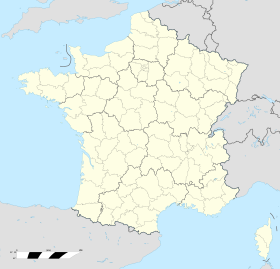Ouvrage Anzeling
| Ouvrage Anzeling | |
|---|---|
| Part of Maginot Line | |
| Northeast France | |

135mm gun turret at Anzeling
|
|
| Coordinates | 49°15′N 6°27′E / 49.25°N 6.45°E |
| Site information | |
| Controlled by | France |
| Site history | |
| Built | 1930-1938 |
| Built by | CORF |
| In use | Private |
| Materials | Concrete, steel, deep excavation |
| Battles/wars | Battle of France |
| Ouvrage Anzeling | |
|---|---|
| Type of work: | Large artillery work (Gros ouvrage) |
|
sector └─sub-sector |
Fortified Sector of Boulay └─Burtoncourt |
| Work number: | A25 |
| Constructed: | 1930-1938 |
| Regiment: | 162nd Fortress Infantry Regiment (RIF), 153rd Position Artillery Regiment (RAP) |
| Number of blocks: | 9 |
| Strength: | 732 enlisted + 27 officers |
Ouvrage Anzeling is a gros ouvrage of the Maginot Line, part of the Fortified Sector of Boulay. It is located between petit ouvrage Bousse and petit ouvrage Berenbach, facing Germany just to the east of Bockange. With one of the longest main galleries of any Maginot position, it consists of two entrance blocks, three infantry blocks and four artillery blocks. A second phase of construction was planned to add nine more combat blocks and an anti-tank ditch, but was never executed. Anzeling saw limited action in World War II, and was rehabilitated for use during the cold war. It was de-activated in the 1970s and sold for private use.
The site was surveyed by CORF (Commission d'Organisation des Régions Fortifiées), the Maginot Line's design and construction agency; Anzeling was approved for construction in May 1931. It was completed at a cost of 122 million francs by the contractor La Parisienne d'Enterprises. The gros ouvrage is of the typical fort palmé ("palm-shaped") form for a large position. The fort palmé is a distributed fortification, with its entrances and underground support areas more than a kilometer to the rear, connected to the combat blocks by a long underground gallery. The "palm" is composed of the grouped combat blocks, linked by galleries to the main trunk.
Anzeling comprises two entrance blocks, three infantry blocks, and four artillery blocks. The combat blocks are connected to the entries and support areas by a gallery system extending about 3,000 metres (9,800 ft) from end to end, one of the longest in the Line. The munitions and personnel entries are located far to the rear of the compactly arranged combat blocks. An "M1" ammunition magazine is located just inside the ammunition entry, while the underground barracks are located at the junction of the two entry galleries. From there a long gallery runs at an average depth of 30 metres (98 ft) to the combat blocks. Anzeling was served by a 60 cm-gauge narrow-gauge railway, which enters at the munitions entrance and runs all the way out through the galleries to the combat blocks. On the surface, the railway connects to supply points to the rear and to other ouvrages. Block 5 is unusual, as it mounts a 135mm howitzer in a façade embrasure, as well as the more usual twin mount in a turret. Anzeling also features a mixed-arms turret in Block 9, equipped with a machine gun and a 50mm grenade launcher that could fire when retracted.
Anzeling also features a unique chimney or ventilator for its generating plant. Called the fosse aux ours, or "bear pit", the ventilation block was large enough to merit its own mixed-arms turret.
...
Wikipedia

